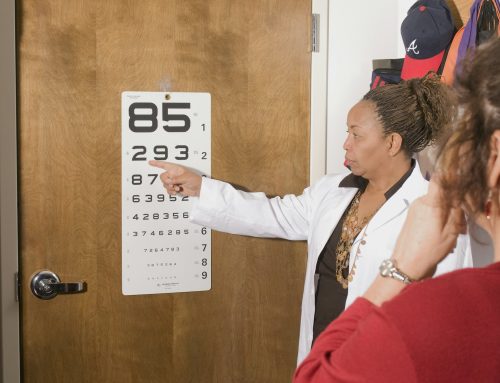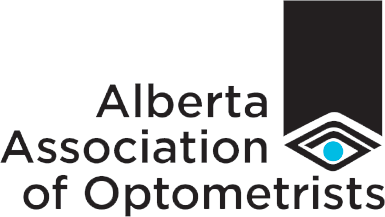An eye prescription might seem like a complex jumble of technical terms and abbreviations, leaving you puzzled about your eyewear requirements. But fear not—this comprehensive guide, brought to you by Optiko, is designed to simplify the process and help you understand your eye prescription.
In this informative article, we’ll explain key terms, such as sphere, cylinder, and axis, and provide insights into how our team of qualified Optiko professionals assists in selecting the ideal frames and lenses tailored to your unique prescription. We’re committed to ensuring our customers feel knowledgeable and confident about their eyewear choices. By understanding your eye prescription, you’ll take control of your vision needs and find the perfect eyewear to enhance your daily life.
1. Understand the Components of Your Eye Prescription
An eye prescription is the result of a thorough eye examination by an optometrist, outlining the lens power required to correct your vision. Let’s dive into the components of an eye prescription and their meaning:
A. Sphere (SPH): The sphere value indicates the lens power needed to correct nearsightedness (myopia) or farsightedness (hyperopia). It is measured in diopters (D). A positive number on the prescription (+) denotes hyperopia, while a negative number (-) signifies myopia. The higher the number, the stronger the correction needed.
B. Cylinder (CYL): This value denotes the presence and strength of astigmatism, a common condition making it difficult to focus on objects due to the irregular curvature of the cornea or lens. Like sphere, the cylinder value is measured in diopters. A positive or negative number indicates the correction required for astigmatism, while “DS” or “SPH” signifies no astigmatism.
C. Axis: The axis is represented in degrees (1-180°) and indicates the orientation or placement of the cylindrical power (CYL) to correct astigmatism. A perfectly circular cornea has no axis value.
D. Add: This value, commonly found in prescriptions for multifocal lenses (bifocals or progressive lenses), is the additional magnifying power required to address age-related farsightedness (presbyopia). It is usually a positive number and the same for both eyes.
2. Prism and Base: Additional Components in Eye Prescriptions
In some cases, prescriptions include values for prism and base. These are typically prescribed to correct eye alignment issues, such as double vision (diplopia):
A. Prism: Measured in prism diopters (Δ), the prism value helps correct eye alignment issues by shifting an image up, down, in, or out to aid the eyes in working together.
B. Base: The base specifies the direction in which the prism should displace the image. It can be designated as one of the four cardinal points: up (BU), down (BD), in (BI), or out (BO).
3. Pupillary Distance (PD): A Crucial Measurement
The distance between your pupils, called pupillary distance (PD), is essential in crafting accurate and comfortable eyewear. Measured in millimetres, PD allows opticians to correctly position your lenses within the frames, ensuring optimal visual clarity. There may be two separate numbers on your prescription that signify the individual distance from the center of each pupil to the middle of your nose.
4. Experiencing Astigmatism: A Closer Look
Astigmatism is a common refractive error affecting a person’s ability to focus on objects clearly. It usually occurs when the cornea or lens has an irregular shape. Because of this irregularity, light entering the eye is refracted differently, leading to blurred or distorted vision. A CYL value on your prescription indicates the lens power needed to correct astigmatism, while the axis value shows the proper orientation for the correction.
Astigmatism may accompany nearsightedness or farsightedness and can vary in severity from person to person. Proper correction with the appropriate CYL and axis values can significantly improve vision and overall quality of life.
5. Multifocal Lenses: Addressing Presbyopia
As we age, our eyes lose flexibility, making it more challenging to focus on close objects—a condition known as presbyopia. Presbyopia usually becomes noticeable around the age of 40 and affects everyone to some degree as they grow older. The “Add” value on your prescription signifies the additional magnifying power required for near-vision tasks, like reading or using a smartphone.
Multifocal lenses, such as bifocals and progressive lenses, can accommodate prescriptions with an “Add” value. Bifocals contain distinct lens sections for distance and near vision, while progressive lenses allow for a seamless transition between different viewing distances, with no distinct lines separating the lens zones.
6. The Importance of Regular Eye Exams
Regular eye exams are vital to maintaining healthy vision and ensuring your eyewear prescription remains up-to-date. It is generally recommended that adults aged 18 to 60 have an eye exam every two years, while older adults and those with specific conditions or risk factors should have exams annually. Staying current with your eye exams allows optometrists to detect and address any changes in your vision, ensuring you always have the proper eyewear and prescription to meet your needs.
By understanding the various components of your eye prescription, you can make informed decisions about your eyewear and proactively address changes in your vision. Our knowledgeable Optiko professionals are always here to assist you in choosing the perfect frames and lenses tailored to your unique prescription and preferences. With Optiko guiding you through the process, you’ll feel confident and empowered to find the eyewear solution that elevates your visual experience.
Unlock the Secrets of Your Eye Prescription with Optiko
Understanding your eye prescription is the key to making well-informed decisions about your eyewear and ensuring optimal visual clarity. While the numbers and terms on a prescription may seem overwhelming, this comprehensive guide has demystified the process and empowered you to take control of your vision.
At Optiko, we believe that knowledge is power. Our team of experts is dedicated to guiding you through the eyewear selection process and providing tailored solutions based on your unique prescription. When you partner with Optiko, you can be confident that we prioritize your visual needs and style preferences.
Don’t let the complexity of an eye prescription stand in your way—visit Optiko today to experience personalized service and a vast selection of designer frames and lenses crafted with precision and care. If you are interested in an eye exam, book one with us. Together, we’ll help you see the world in perfect clarity.








